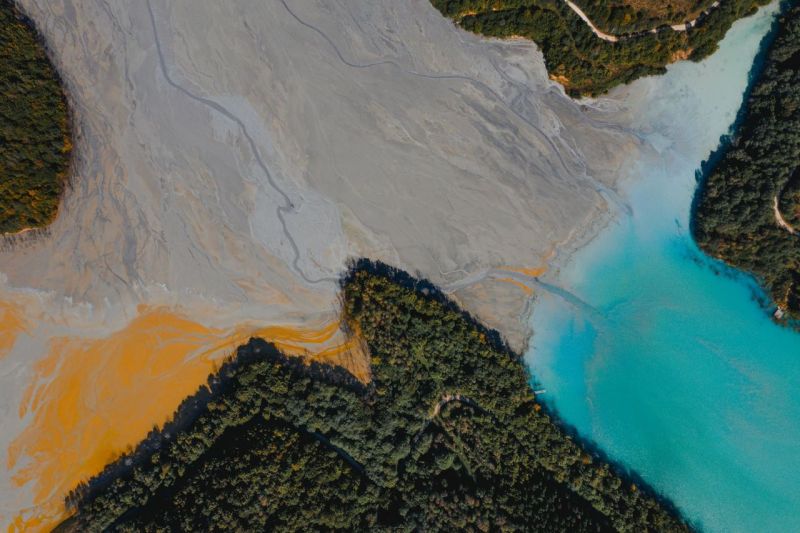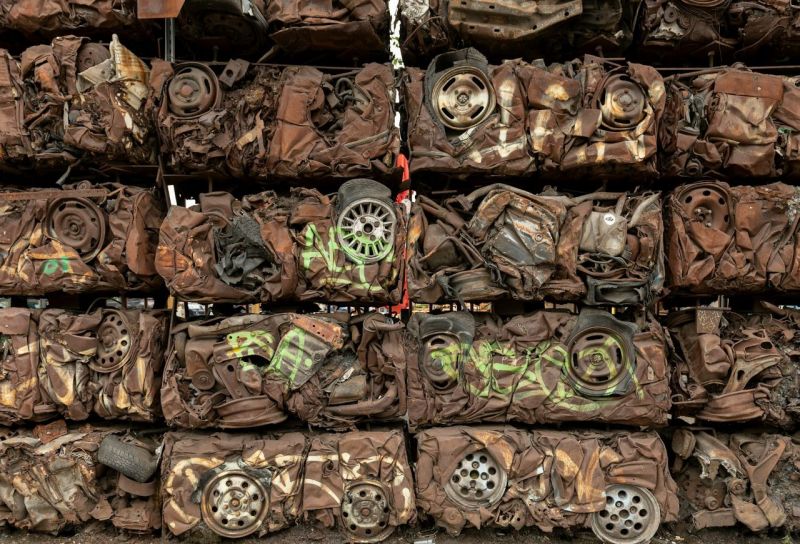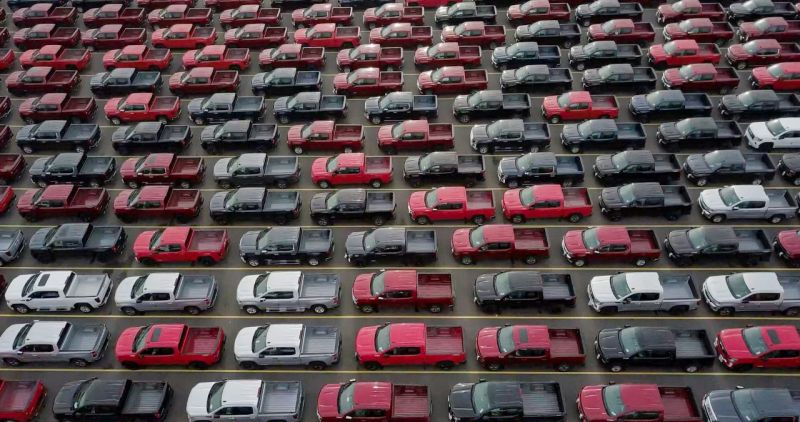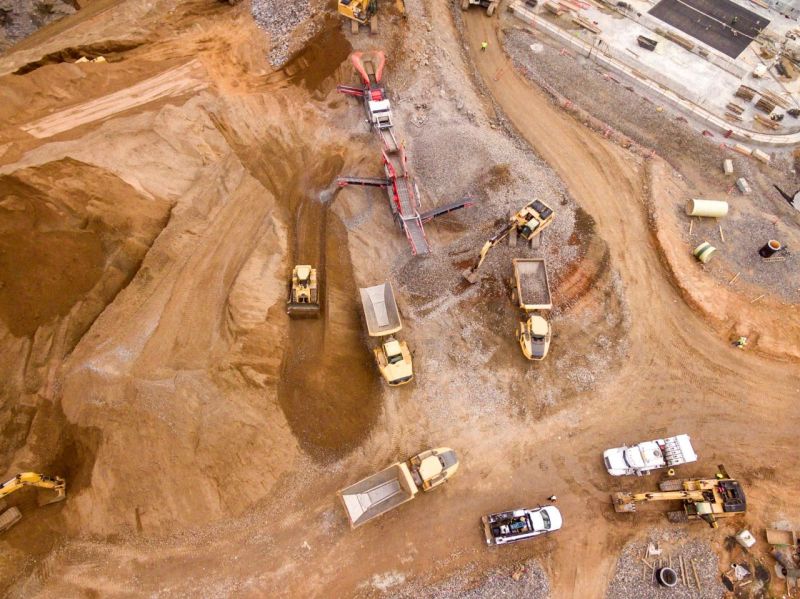In the greenest of ironies, the same technologies that could save us from the climate crisis rely on an industry whose environmental record is far from clean.
Mining has run up a long list of troubling activities, from exorbitant water use to chemical pollution, the destruction of biodiversity and human rights abuses.
On top of that, primary mineral and metal production is responsible for roughly 10 percent of global energy-related greenhouse gas emissions.
Yet we need metals and minerals to manufacture electric vehicles, wind turbines, solar panels and batteries – meaning we can expect a big increase in mining in the years to come.
In 2020, the World Bank projected that demand for raw materials such as copper, bauxite, cobalt, nickel and manganese – to name only a few – will grow by 500 percent by 2050.
“As we move to a planet which is struggling with the climate crisis, this industry, which we always relied on but didn’t know much about, and which has furthermore been linked with harm that can persist for centuries, is going to be linked to the solutions to that crisis,” says Aimee Boulanger, executive director of the Initiative for Responsible Mining Assurance (IRMA).
“That feels like an incongruence.”
Some of the minerals most needed for the production of new technologies, such as lithium and rare-earth elements (REEs), use a lot of energy and leave a lot of waste. In China, which makes up 85 percent of the global market, the extraction of REEs produces 2,000 tons of toxic waste for every ton extracted.
What’s more, much of the mining for these minerals and metals takes place in countries across the Global South, even though few of their citizens get to reap the benefits.
In 2022, researchers at the University of Brisbane analyzed 5,097 projects and found that more than half of them were “located on or near the lands of Indigenous and peasant peoples.”
How mining companies are slashing emissions
So, while it has an important role to play in creating a greener world, can the mining industry itself become greener?
According to consultants in the growing field of mining technology services, the answer is yes.
“A lot of the global companies we deal with are already making great progress in greener mining or moving into that space,” says Tom Jordan, director of U.K.-based Mine Tech Services (MTS).
While some companies are more advanced than others, he says, “they’ve got a clear vision and associated goals, and people at those companies are talking about it regularly.”
MTS works primarily in the blasting, loading, and hauling of mining operations, helping companies optimize the equipment and processes they already use.
For example, while a company may not yet be able to replace their diesel trucks with electric ones, Jordan says they can use them more efficiently by removing unnecessary waste and improving productivity to move more tons while burning the same or less fuel.
Some companies are also using a combination of available technologies such as diesel-electric trucks and trolley assist. The latter involves connecting trucks to overhead electric power lines while they are driving up steep inclines, which sharply reduces fuel burn and thus carbon emissions.
The mining industry is also turning increasingly to solar electricity to power operations. In Australia, Rio Tinto Group signed a deal in January to underwrite the development of both solar and wind for use in its aluminum mines.
Meanwhile, Chile is expanding its solar capacity to meet both mining and other electricity needs. Its state-owned mining company Codelco recently announced that 85 percent of its energy will come from renewable sources by 2027.
“The industry is pushing ahead or are ahead of what they’re being told to do by government legislation because they want to,” says Jordan, “swapping over to different power creation methods, using solar fields and other renewable sources instead of fossil fuel sources.”
They may not be able to do that right away, he adds, “but we tell them they can look at ways to start reducing CO2 emissions tomorrow.”

What about water and waste?
Beyond carbon emissions, however, Boulanger explains that water use and waste account for mining’s greatest impacts on the environment and on local communities.
“You are digging large holes in the ground and heaping up large piles of crushed earth, changing the landscape dramatically and what and who can live on it,” she says.
With water increasingly at a premium in a heating world, mining companies have been looking for ways to use it more efficiently, such as recycling water from their tailings to reduce the amount they take from rivers and groundwater sources.
Tailing ponds also have a history of collapsing, with massive flows of sludge killing local people and destroying natural habitats.
One method that is becoming common practice is thickening tailings by separating liquids and solids and storing the resulting dry stacks, which can be toxic, in lined basins to prevent leakages and runoff.
For Boulanger, the industry still has a long way to go. “The change in operations, in what is actually happening on the ground, is still in progress,” she says.
Her views are based on 18 years of the IRMA’s trajectory as an organization that uses third-party auditors to score mining companies on four principles: social responsibility, environmental responsibility, business integrity, and planning for positive legacies.
The IRMA system recognizes four levels of achievement, from transparency – making audits public – to meeting either 50 percent, 75 percent or 100 percent of its core set of requirements. These assessments are valid for three years.
So far, 19 mine sites have completed verification, while another 85 sites owned by 82 companies are still working on it, accounting for over 100 sites in 32 countries.
It’s an indication that the mining industry is aware that it has a problematic reputation, to say the least.
“However, it’s a lot more than that,” she explains. “We need to do less harm in extracting these materials, processing them, using them, and being more thoughtful to not be wasteful.”
And if the industry has not cared about such issues in the past, it’s because they didn’t have to and had no incentive to.
“So, why might you be the company to step ahead and do more if there was no feedback loop in your regulatory structures or in the market to value that?” Boulanger asks.
“The fact that we can now create both of those – both strengthened laws and a market that does create a positive feedback loop for less harm – means it is very attainable right now.”

Can recycling make mining green?
Recycling offers another way to reduce the environmental impacts of mining.
According to a report published by U.S. non-profit Earthworks, “recycling has the potential to reduce primary demand, compared to total demand in 2040, by approximately 25 percent for lithium, 35 percent for cobalt and nickel and 55 percent for copper, based on projected demand.”
“This creates an opportunity to significantly reduce the demand for new mining,” it continues.
In fact, mining companies are also reprocessing their vast deposits of waste to recover both metals and REEs.
According to CanmetMINING, a research center run by Natural Resources Canada, this can now be achieved “in a manner that requires less energy and water, fewer chemicals, and generates less waste.”
For instance, in a century-old nickel mine in Sudbury, Ontario, a pilot project to recover material from tailings waste will recoup an estimated CAD 8 to 10 billion (USD 5.8 to 7.3 billion) worth of nickel.
Another potential source of the copper, nickel, aluminum and REEs needed to stabilize the climate is the mountain of electronic waste we discard every year.
According to the UN’s Global E-Waste Monitor, the world generated a record 62 billion kilograms of electronic waste in 2022. That’s 7.8 kilograms per person – a figure that has almost doubled in 12 years.
And although 60 percent of copper and aluminum was retrieved for reuse, less than a quarter of global e-waste was documented as formally collected and recycled.
The Monitor finds that recycling of useful metals from e-waste has been increasing – from 8 billion kilograms in 2010 to 13.8 billion in 2022 – but it’s not keeping pace with what’s being generated.
This growing gap is “driven by technological progress, higher consumption, limited repair options, short product lifecycles, growing electronification and inadequate e-waste management infrastructure.”

Consumerism to blame
For Diego Marin, a policy officer with the European Environmental Bureau (EEB), the focus on recycling, which is also energy-intensive, needs to evolve into a focus on using less.
“Recycling is the lowest hanging fruit of the circular economy,” he says. “As the economy keeps growing, recycling keeps growing as well, which is good, but it will never be able to close the gap.”
Instead, the EEB wants to see the European Union address the rampant overconsumption of resources.
“How can we guide our economy to focus on these three aspects: rethink, refuse, reuse?” Marin poses. “At the moment, it’s just ‘recycle.’ It’s a tool, but there are still many other aspects to focus on.”
By reducing demand for consumer products, we can reduce the amount of raw materials needed in the economy – and thus the amount of mining needed, he points out.
Boulanger agrees: “We talk a lot about greenwashing – how to not get used as a permission slip,” she says.
“If we are looking for a different paradigm on how we live on this Earth and use its materials, we need to address consumption and who is using most of them – and that is not the same place where the impacts are being felt.”
While techno-fixes can help mining can do less harm to the planet and local communities, that doesn’t mean the industry can continue to operate at the scale it currently does.
“We know that we can improve mining,” says Marin. “We have the technology and the know-how. But when you translate whether something can be less environmentally impactful versus actually sustainable, there’s a different metric.”
“Across the board, the industry is moving extremely slowly to what is actually needed. And if we need these materials as soon as possible because we want to enable the energy transition, then something needs to change.”
The post Can mining ever be sustainable? appeared first on #ThinkLandscape.




